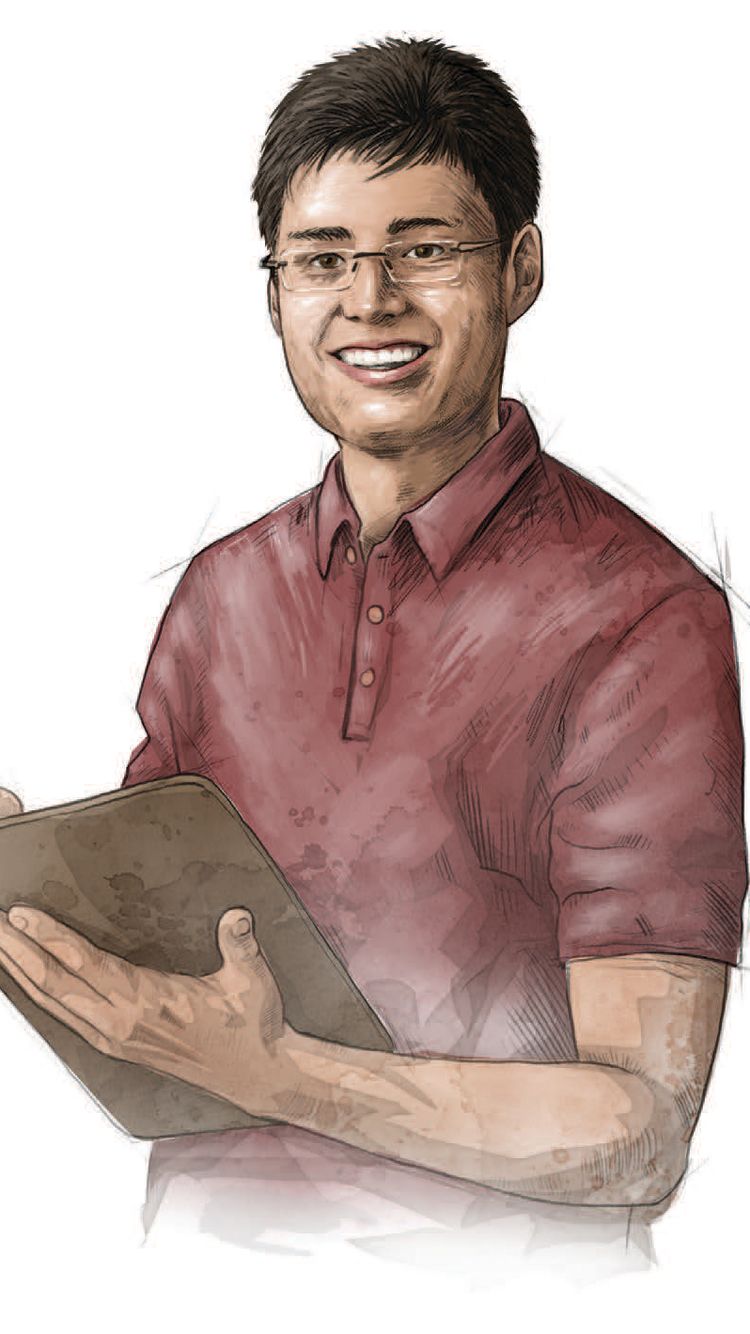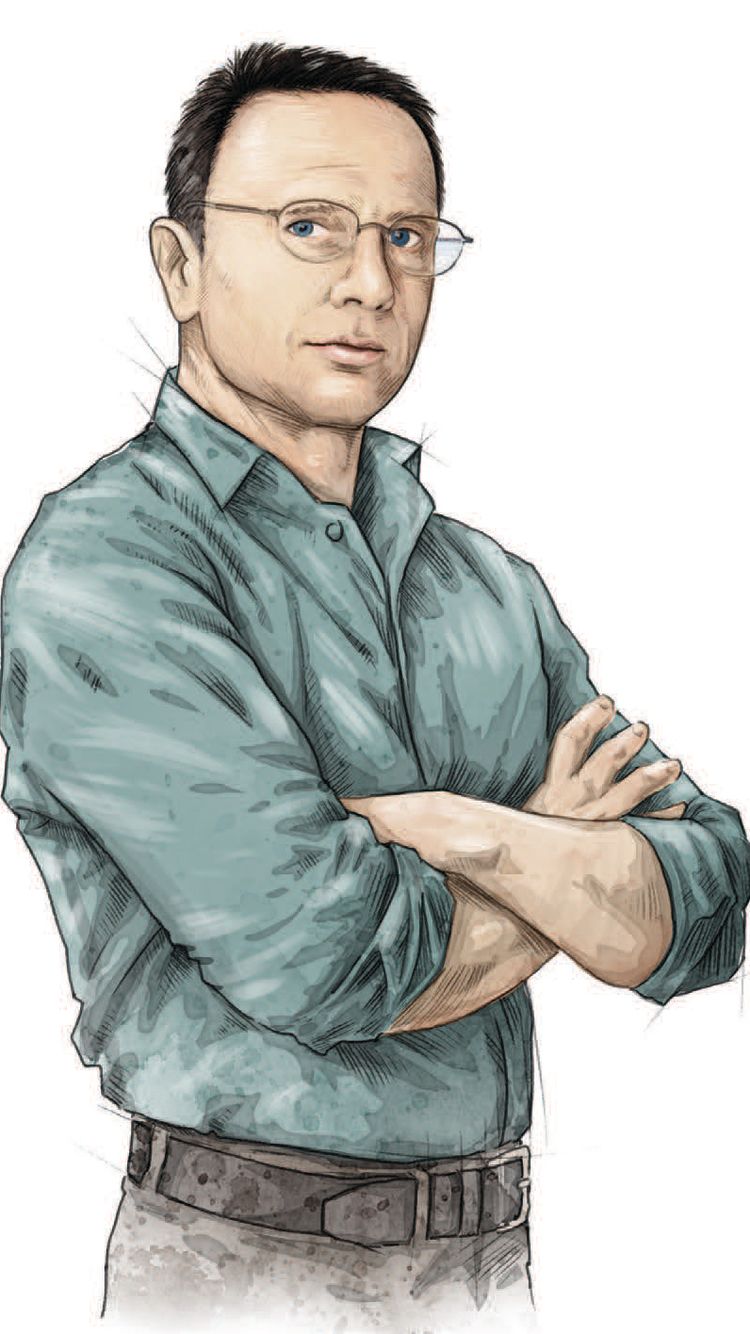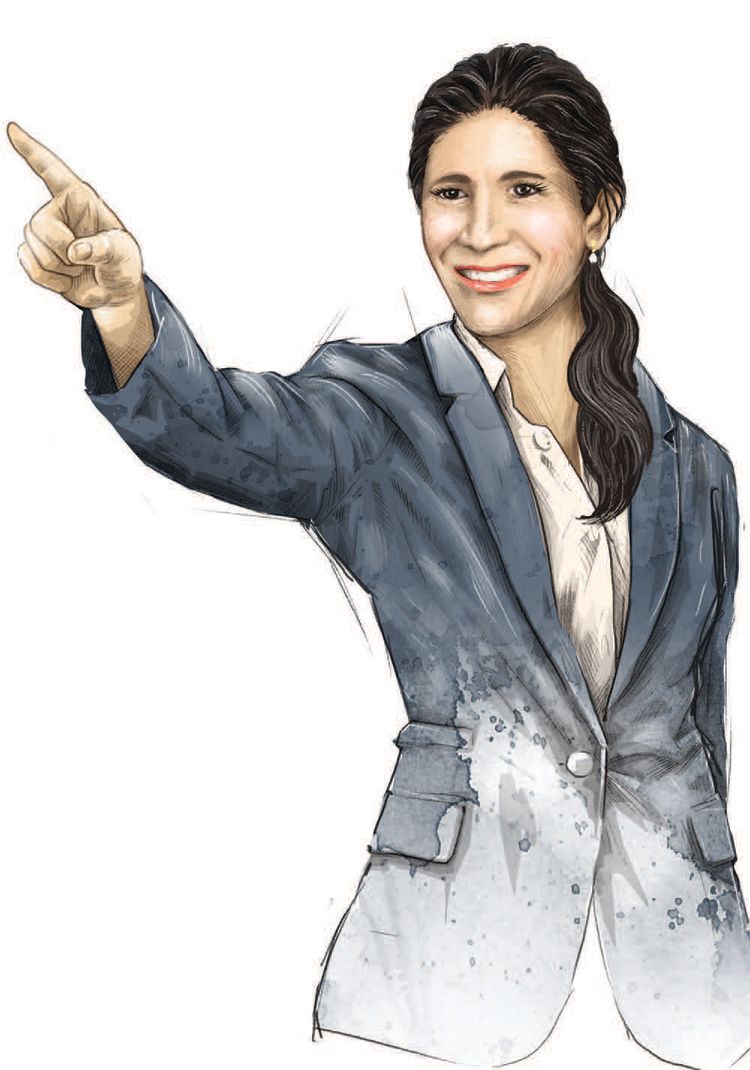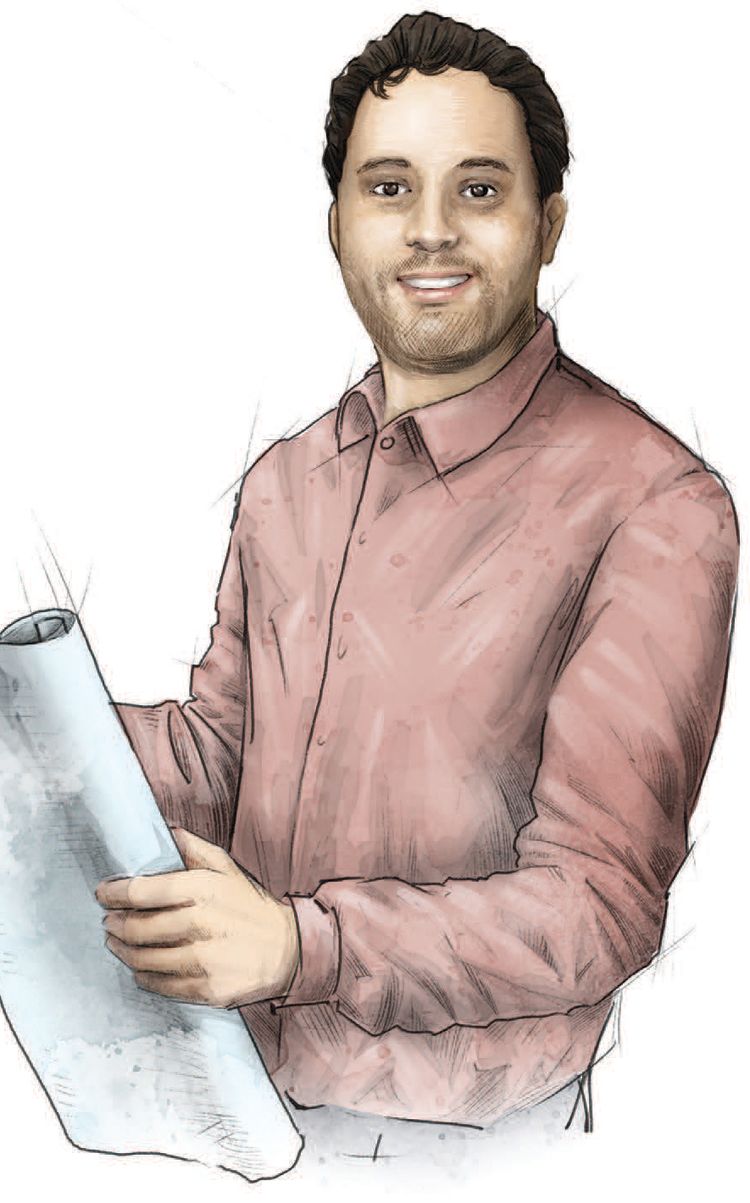An engineered future
Engineers will decide what 21st century life looks like. We ask four of our alumni to talk about what the future holds for the next generation of problem-solvers.
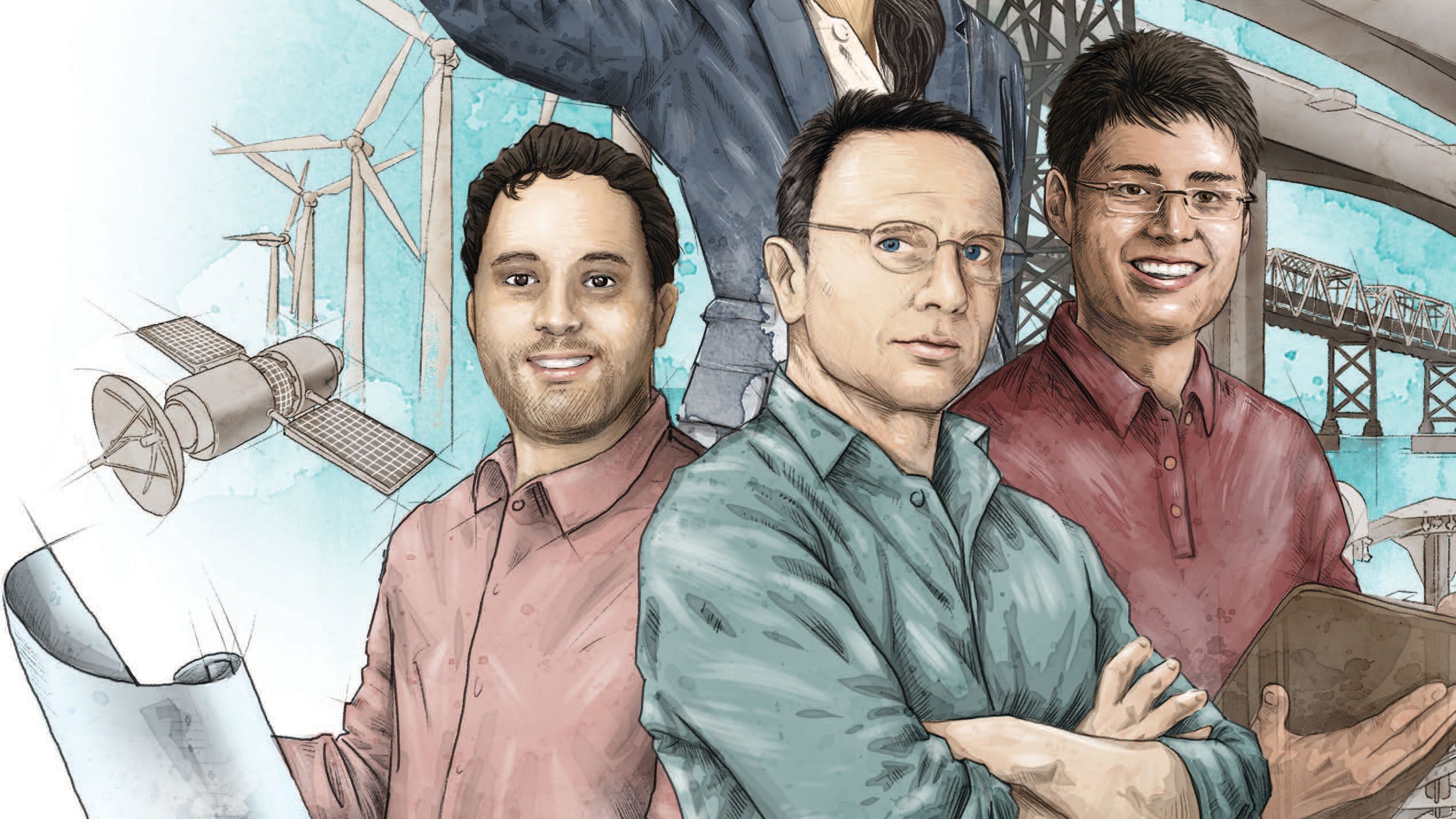
Read Voices Spring 2016 full edition
One man’s magic is another man’s engineering,” said science fiction writer Robert Heinlein. Looking at the extraordinary achievements that engineering has given the world, it’s hard to disagree: from automobiles to aeroplanes, bridges to bionic limbs, washing machines to wi-fi, engineering is behind them all. It’s a science that spans scale, from the biggest and most awe-inspiring skyscrapers to the invisible world of genetics, and one that humanity simply can’t do without. In a globally connected world facing rapid technological change, what challenges will the engineers of the future have to tackle? Whatever they are, there’s one piece of very good news: the engineers are looking forward to them.
“I believe that engineering is still one of the core sciences – it’s one of the core traditions we have as humans,” says Patrick Müller, Class of 1981 (1980-81), currently based in Shanghai as CEO at chemical processing equipment company DrM. On leaving AISZ, Patrick gained a diploma in Chemical Engineering at ETH Zurich, one of the world’s leading universities for technology and the natural sciences, and an MBA at INSEAD, France. He knows first-hand how fascinating engineering can be: his grandfather, DrM founder Hans Müller, was responsible for more than 400 patents. “Engineering is what drives the human race further. I see much more opportunities than challenges. What we are touching now is really only the beginning.”
"One location can't develop a whole system. It has to be inclusive of other groups."
Sebastian Rainer, Class of 2010

Sebastian Rainer
Sebastian is an engineer at engineering consultancy firm Belcan Corporation in Florida, and has a BS/MS in Aerospace Engineering from the Florida Institute of Technology.
The challenges are certainly big. The 2015 Create the Future report, commissioned by the global Queen Elizabeth Prize for Engineering, identifies five top problem-solving areas for engineering worldwide: improving renewable energy, advanced computer technology, healthcare, infrastructure and online security.
Facing up to the skills gap
But there are also issues for the sector itself to overcome if it is to meet these challenges. In a global marketplace, some countries face a skills gap. A report from the Manufacturing Institute in the US is predicting a 48 per cent skills gap in engineering by 2020 – an increase of 15 per cent from 2014. The number of new graduates produced by developing countries such as Vietnam is growing, while a report for Engineering UK found that UK engineering employers will need to recruit 2.56 million people – including 257,000 new vacancies – by 2022, just to keep pace with demand.
“Most companies are having to maintain a global engineering collaboration of some sort,” says Robert Tate, Class of 1983 (1980-83), who has a BSEE in Electrical Engineering from Michigan Technical University. He is director of engineering for marine engineering firm Attwood, based in Michigan, USA. “Right now, I have engineers that work with me in India, in China, in Northern Ireland. You have to tap into global resources in order to compete. Wherever our company is at, they are looking for talent – and it’s hard to find it.”
Sebastian Rainer, Class of 2010 (2006-10), an engineer at Belcan Corporation, Florida (BS/MS Aerospace Engineering, Florida Institute of Technology), says that engineers of the future are going to have to be flexible and global in their outlook. The increasingly specialised nature of the sector – micro-engineering, software engineering, robotics engineering, along with the more traditional civil and mechanical engineering – demands collaboration. His company has branches across the US, Asia and Europe, working on various stages of complex projects. “One location can’t develop a whole system,” he points out. “It has to be inclusive of other groups as well.”
"In the world I gew up in it was more regional. In the future that's just not going to be possible."
Patrick Müller, Class of 1981

Patrick Müller
Patrick is CEO of chemical processing equipment company DrM. He holds a diploma in Chemical Engineering from ETH Zurich and an MBA from INSEAD, France.
Patrick agrees: “In the past you studied, let’s say, mechanical engineering or civil engineering, and you could develop the product from beginning to end. Today it is completely different. Take a new robot, for example. You need sophisticated mechanical engineering, micro-engineering, IT, electronics, and sometimes even chemical engineering or bioscience knowledge for completing such complex tasks.”
A global challenge
It is not just about competition for talent, but also for customers and clients. Engineers need to be increasingly skilled in iterating, inventing, moving products forward and working with new technology – if they don’t do it, says Robert, someone else on the other side of the world is going to. “You can deliver goods and services globally through distribution channels that weren’t even available when I was going to school,” he says. “In the world that I grew up in as an engineer, you had a sphere of influence that was more regional. And in the future, that’s just not going to be the case. If I make one product here and someone makes it somewhere else on the other side of the globe, the consumer who lives two doors down from me can buy it from either place just as effectively. So the sheer pace at which people are able to innovate will be the biggest challenge for engineers in the future.”
Getting to grips with new technology is already happening, says current parent Suzanne Rapetti-Hunsicker, Class of 1982 (1977-82), who has a Master's of Engineering from Thayer School of Engineering in the USA. She is a partner at the Swiss project management and consulting company, hmb partners AG. Her area, civil engineering, doesn’t move as fast as other sectors, she says, but things are changing nonetheless.
One big leap forward is the move to building information management (BIM) technology, which she says will be as revolutionary as the switch from hand drawing to computer-assisted design (CAD) was in its time. This new system allows engineers and architects not just to plan every aspect of a building more efficiently, but also to manage it after completion, reminding facility managers to maintain certain pieces of equipment at predefined intervals.
“BIM is being implemented more and more, and will eventually become the standard,” she says. “It opens up many new possibilities but, of course, there are also disadvantages. There’s an inherent danger that the results the BIM technology produces will be assumed to be more accurate than they actually are given the quality of the information fed into the system. Regardless of the technology used, though, there will always be a place for engineers. It’s their particular way of thinking – breaking a problem down into manageable steps and solving it that way.”
"Regardless of the technology engineers will always have a place."
Suzanne Rapetti-Hunsicker, Class of 1982

Suzanne Rapetti-Hunsicker
Suzanne, a current parent, has a Master's of Engineering from the Thayer School of Engineering, USA. She is a partner at hmb partners AG, the Swiss project management and consulting company.
The young engineers of the future will need all the technology they can get to help them innovate in a world where resources are increasingly scarce – from the metals that go into a product to the energy which runs the machines that make it. Again, this is already happening: Sebastian points to the revolution in 3D printing that is drastically cutting down on waste. Making machine parts from moulded plastic used to involve a lot of this waste, as the frames around the moulds had to be cut out and thrown away. Now, 3D printing machines can melt plastic into those shapes directly – a far quicker and more energy-efficient process with less waste.
Patrick – who designs electronic motorbikes in his spare time – believes that working out ways of recovering resources that are already used will see new opportunities for engineers.Copper, for example, is used extensively in electrical goods for its conductive properties. Nickel is currently used in more than 300,000 types of products, including stainless steel, and its use is growing at around four per cent a year.
“As we develop new, more sophisticated products, the types of raw materials we need are becoming more complicated,” says Patrick. “When a resource gets scarce, prices will go up and then the challenge is to find a replacement for those materials. And there will be a whole recycling industry developing around it.”
Back to basics
Education, of course, will be key. The skills Robert learned when he was going through college are typically handled by computers today. So engineers of the future will need to be able to work with those computer tools, which will continue to grow and become more accurate, in order to compete.
"The best engineers are the people who think 'There must be a better way to do that'."
Robert Tate, Class of 1983

Robert Tate
Robert is director of engineering for marine engineering firm Attwood. He has a BSEE in Electrical Engineering from Michigan Technical University.
“The engineer is not the one doing the analysis that determines through calculus how, for example, heat transfers through a material,” Robert says. “The software simulates it at a far greater pace than you could ever do the calculations yourself. You need to understand the fundamentals but the vast majority of engineers are focusing more on the application of those fundamentals than they are on doing the calculations.”
And, of course, it is essential to get more young people into engineering in the first place. Patrick would like to see much more being done to raise the profile of science engineering, particularly in schools, while Sebastian believes that the image of engineering could do with an update. “I haven’t seen a whole lot of interest from my side from younger students looking into engineering,” he says. “I think the idea of engineering is still old-fashioned – the image of working in a cubicle with rulers and you do all these maths calculations, and they might be so difficult. But it’s really changed a lot now.”
Whatever the future holds for engineering, it will remain, at its heart, all about problem solving. And whether it’s finding new ways to make renewable energy more efficient, achieving longer battery life for a smartphone, taking mankind further into space or cutting down on waste, there’s no doubt that engineers will continue to play a major part.
“The best engineers are the people who always think: ‘There must be a better way to do that’ – it doesn’t matter what it is,” says Robert. “When you see someone doing something, anything, 98 per cent of the population says ‘that’s the way it’s done’, and then there is that two per cent that say ‘there has got to be a better way’. Those two per cent are the engineers.”
Engineering at ZIS
To help encourage the engineers of the future, ZIS offer a broad range of activities aimed at developing core engineering skills.
As of August 2016, for instance, Upper School students will be able to study Applied Mathematics, a project-based learning course which encourages an interdisciplinary approach to STEM challenges based on real-world applications. In Grades 11 and 12, students can take a course in Robotics and Applications, and in the Middle School, a new after-school challenge, F1 in Schools, will see teams of students use CAD/CAM softwareto collaborate, design, analyse, manufacture, test and then race miniature compressed air-powered balsa wood Formula 1 cars.
Grades 3-5 get involved with STEAM subjects (Science, Technology, Engineering, Arts and Maths) through specific after-school activities, learning how science affects their everyday lives and looking at examples of these topics in the real world.

